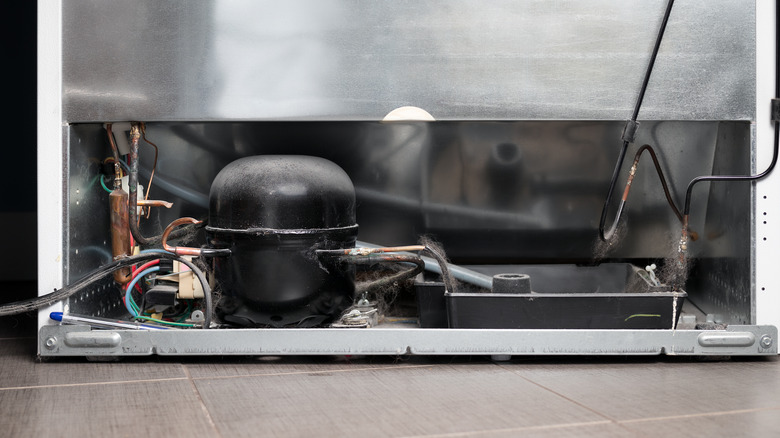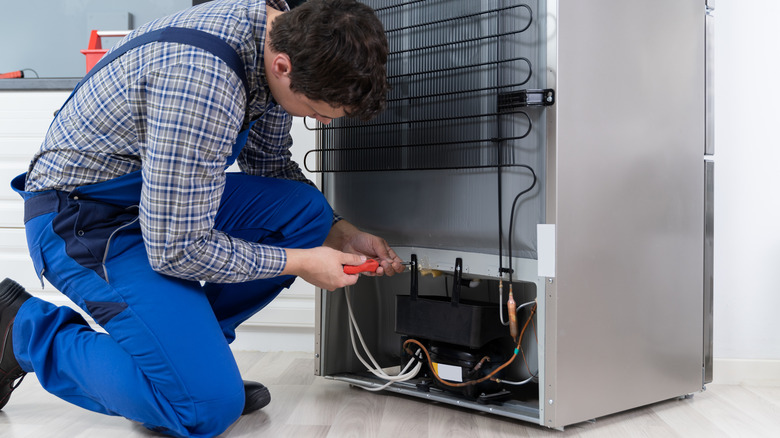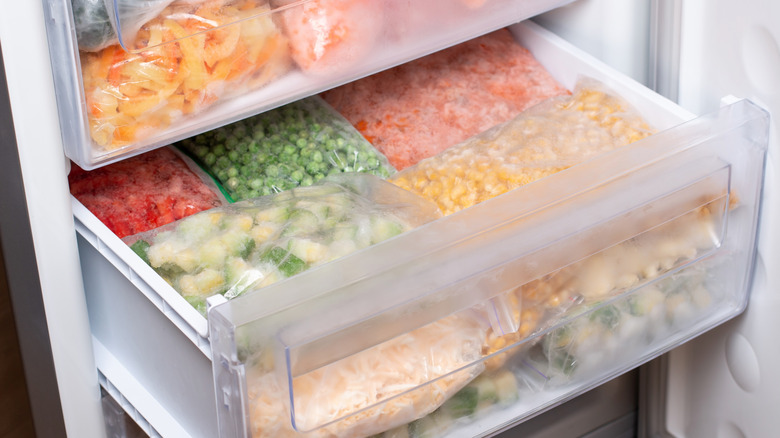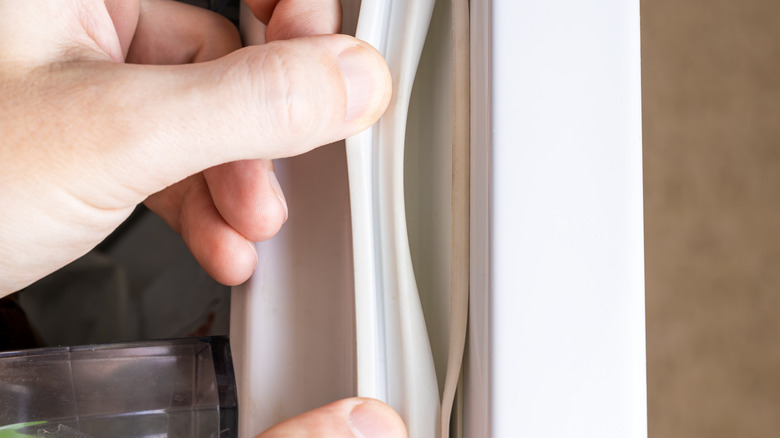Why Your Refrigerator Isn't Cooling, According To An Expert
It's no fun to come home after a long day at work to find the milk in the refrigerator is warm and the food you were hoping to cook for dinner has gone bad. In order to keep most food safe the temperature within the fridge should be 40 degrees Fahrenheit or below, and optimally that figure should be closer to 37 degrees. There's a high chance that foodborne illnesses can thrive when these temperature requirements are not met, even if it's only been a few hours.
Often, it's best to call in a professional as soon as possible if you need to fix a refrigerator that's not getting cool. However, if you're handy, you may be able to troubleshoot the problem and potentially get your unit working properly again in some instances. In an exclusive interview with House Digest, Dennis Godynuk, the founder of Comfort Appliance and Refrigeration Repair in Buford, GA, offers insight into how you can figure out what's going wrong. Keep in mind that some of these potential problems may still warrant calling a licensed professional to pinpoint the issue and make the repairs.
Issues with the compressor
As you open the door, the light to the fridge may still come on, yet it's no longer cold inside and you cannot feel air blowing. Godynuk shares, "The first and most likely reason is that the compressor may not be working properly. This is the main component of your refrigerator and is responsible for cooling down the air inside. If there are any issues with it, then your fridge will not cool down as expected."
The compressor could make loud or strange noises if it's still able to run. Sometimes it will turn on and often frequently, or it may overheat and then stop working. "Fortunately, diagnosing a faulty compressor is fairly easy and just requires checking electrical currents with a voltmeter or thermometer at each of the terminals on both line and load sides," says Godynuk. "If one of them shows unequal readings compared to the other side, then it could mean that a part needs replacing or that there is an issue with the power source itself." Replacing the compressor is a bit of an invasive project and one best left to a handy do-it-yourselfer or a professional.
Dirty condenser coils
Pull the refrigerator away from the wall so you can see the back and sides to determine if this next problem is occurring. "Another common cause of an uncooperative refrigerator is that the condenser coils may need cleaning," shares Godynuk. "The condenser coils act like radiators in that they dissipate heat created by refrigerant escaping from your appliance into the atmosphere. But if these coils become clogged up with dust, then they won't be able to do their job properly which will, in turn, mean less efficient cooling power."
He continues, "Therefore, dissecting and cleaning off any dust build up every few months (or at least once a year) should fix this problem quickly." You may need to increase the maintenance on the coils if you live in an area with significant dust. Use a vacuum with an attachment to pull out as much of the dust and debris as you can. If possible, unplug the unit while it is away from the wall, then remove the back covering to retrieve even more debris.
Frost buildup
Take out the food along the back wall of your refrigerator to look for signs of frost. "Sometimes frost buildup on interior walls can also lead to cooling problems due to its ability to absorb heat from within. This makes it harder for your appliance to reach desired temperatures quickly," notes Godynuk. In some cases, frost can develop behind the plastic interior wall, but you may still see it bulging at the seams or feel the ice if you put your hand against it. That's a problem to address quickly. Dealing with this now could be critical to preserving the life of your refrigerator.
Godynuk adds, "To prevent this from becoming a recurring issue, make sure you inspect any food items stored inside before placing them back into cold storage. Warm foods will cause frost accumulation much faster than colder ones." Removing and cleaning off the frost can be helpful, but you may have to pull off the back wall cover to do this fully. Sometimes just removing the frost solves the problem. "If all else fails, check out your user manual for further guidance on how best to defrost correctly without damaging delicate components found within like evaporators or fans," he recommends.
Weak door seals
If checking for these common concerns doesn't result in a solution, especially if you can hear the motor running and there's no visual frost buildup, Godynuk points to a non-mechanical potential for concern. "Finally, a lesser-known culprit might be weak door seals around your refrigerator's edges. These are often overlooked during general maintenance routines but play an important role in keeping consistent temperatures within your appliance due to their insulation properties."
Open the door and inspect the plastic around the edges. It should be somewhat hard to the touch with just a bit of give. If there are tears in it or there's a significant amount of debris within the grooves, that could be a sign of a problem. "If these seals have worn away over time (due to age), then chances are that some precious cold air will escape causing inefficient cooling performance overall. Therefore, making sure they remain tight over time should eliminate potential issues here too," recommends Godynuk. If the fridge door won't stay closed, you've likely found the reason for the too-low temperatures. You can purchase replacement seals, sometimes called gaskets, from the manufacturer. Look for the make and model of your refrigerator or ask a professional to handle the job for you.




